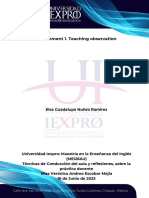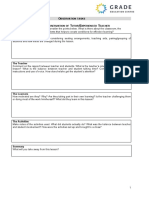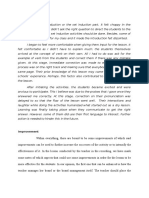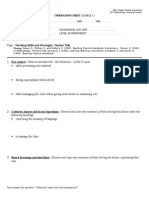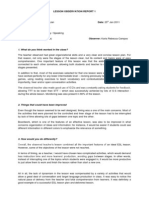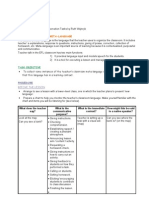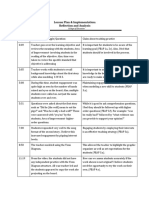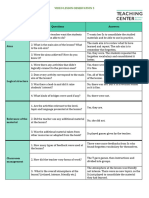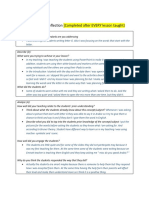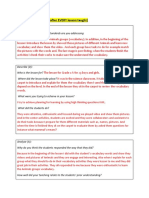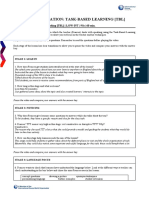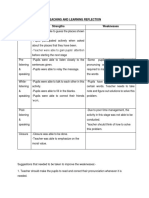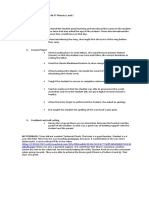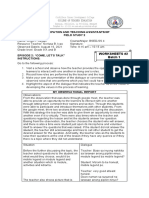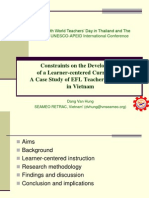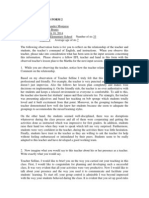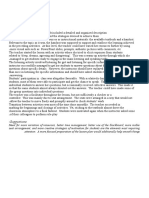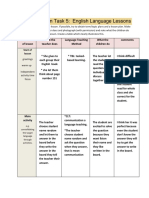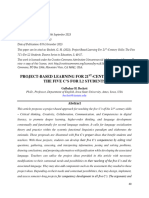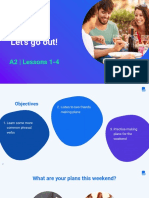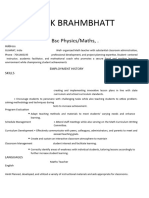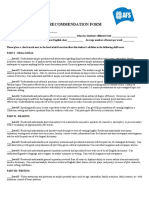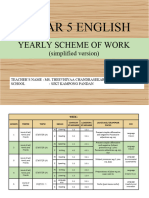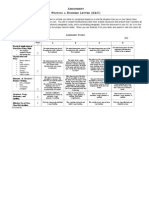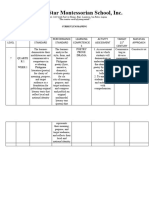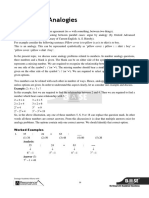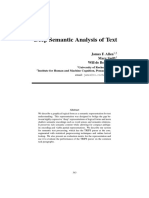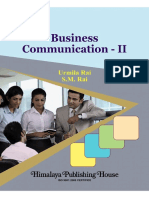Focus on teaching Focus on the content
5. Make a note of 2 effective examples of 5. What were the main aims of the lesson? Were
eliciting. What was done in each case to make they achieved? If ‘yes’, then how do you
it effective? Also note down any examples of know? If ‘no’, then why not?
eliciting that were less effective? Why was
Listening, reading and vocabulary
this?
“Do you think it is important to do other Yes, Students were generally clear about what
countries traditions before troubling? “ to do and they’ve answered correctly, due to
“What do you think will be about” thorough explanations and checks for
The teacher asked open-ended questions to understanding.
6. Make a note of 2 things that were effective.
encourage students to think and respond
Consider focusing on areas of teaching that you
creatively. This was effective because it are or you were working on.
prompted deeper thinking and more detailed
answers. Smooth transaction from a point to
“Was it a good deal or a bad deal?” another. Hand gestures and body
T guided the Ss to the answer instead of language.
spoon-feeding them 7. Make a note of 2 things that were less effective.
Why was this? What was the impact on the
She explained the two ways of pronouncing lesson or students?
“th” instead of eliciting. She could have given She explained some points instead of
them marker sentences and asked the Ss to eliciting.
extract the 2 ways themselves Asked yes or no questions instead of letting
the Ss say the answer themselves.
6. How effective were the instructions for each Commentating
stage/activity? How did the teacher check sts’ This increased TTT
understanding of instructions? How effective 8. Write a question for each stage that you’d like
were demonstrations? How clear were sts about to ask the teacher in feedback.
what they had to do? Why/why not?
Instructions were short and precise. T
checked using ICQs. “Will you answer in
pairs or in groups?”
Demonstrations were effective as they
provided a clear model for students to follow.
Everything was clear enough as the Ss were
able to answer, weren’t confused and didn’t
ask any further questions.
7. How involved were sts in the lesson? Were all
opportunities for STT exploited? Was there a
useful balance of pair work and group work?
Students were highly involved, participating
actively in discussions and activities.
Opportunities for Student Talking Time
�(STT) were maximized through pair and
group work.
There was a good balance of pair work and
group work, ensuring all students had a chance
to speak and collaborate.
8. How effectively were M/P/F covered in the
lesson?
T modeled and drilled.
Meaning, pronunciation, and form (M/P/F)
were covered effectively through a mix of
explanation, drilling, and contextual practice.
This helped reinforce language points and
ensured students understood how to use new
vocabulary and structures correctly.
